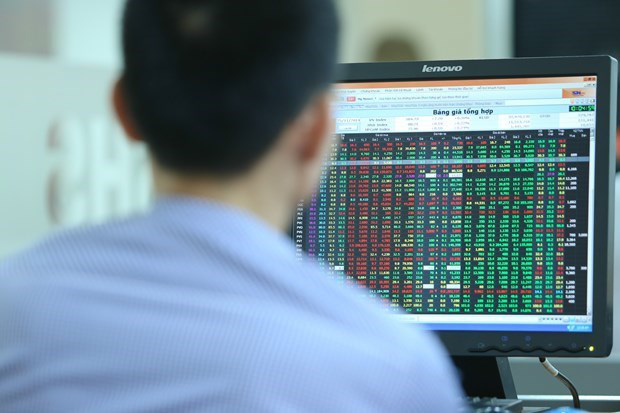 Economy
Economy


|
| An investor follows stock movements on a computer screen. — Photo vtv.vn |
HCM CITY — The Vietnamese stock market has been rising to historical levels in terms of points and liquidity, still has huge growth potential and could even be at the beginning of a multi-decade surge, according to investment fund VinaCapital.
The number of Vietnamese companies with a market capitalisation of over US$1 billion rose from 10 in 2015 to nearly 50 today as the market’s total value surged from 30 per cent of the country’s GDP to 90 per cent, comparable with that of its regional peers.
The number of new accounts opened by retail investors doubled last year, and added up to more than the number of new accounts in 2019 and 2020 combined in the first half of this year.
Michael Kokalari, chief economist at VinaCapital, said Vietnamese investors have historically invested in real estate, gold and/or in the stock market in that order of preference, but those market opportunities have dried up.
“In the absence of attractive investment alternatives, savers are turning to the stock market.
“We view retail investors’ current enthusiasm as yet another harbinger of the development that lies ahead for Việt Nam’s stock market, given that retail investor participation in the market is still in its infancy, Việt Nam’s mutual fund industry is at a very early stage of development, corporate pension plans are just starting to be introduced, and the fact that derivative products were only recently introduced.”
The number of accounts is still only around 3 per cent of the country’s population despite the recent surge, and that figure is comparable to Taiwan’s retail stock brokerage account penetration rate around 1986.
“Việt Nam is following the same East Asian development model that Taiwan and the Asian Tigers used to become wealthy - and every Asian Tiger’s stock market flourished as their economies grew – and so we believe Việt Nam is still at the very beginning of a multi-decade development of its stock market.”
The Government aims to increase the country’s stock brokerage penetration rate to 5 per cent by 2025 and to 10 per cent by 2030, which seem like realistic targets given the trajectory of Taiwan’s retail investor participation when it was at a comparable stage of economic development.
The influx of new retail investors overloaded the stock exchanges’ trading and clearing systems, causing some disruptions on the Hồ Chí Minh Stock Exchange.
Upgrades by the Korea Stock Exchange (KRX) are likely to be installed in early 2022.
The KRX system, currently being tested, will have additional features besides increased capacity, including eliminating the need to pre-fund trades and do same-day settlement, which will enable intra-day trading.
All the basic building blocks of a modern stock market are being put in place to accommodate anticipated growth, Kokalari added. — VNS




